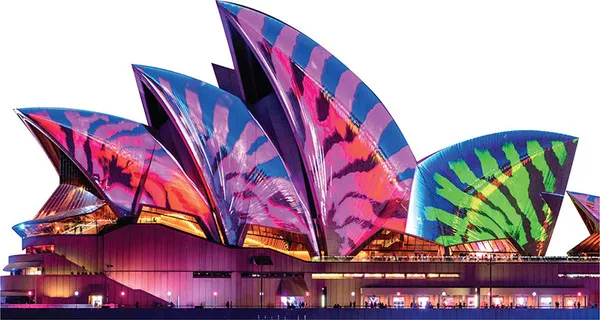
Essentials of Tourism
Chris Cooper
- 472 pages
- English
- ePUB (mobile friendly)
- Available on iOS & Android
Essentials of Tourism
Chris Cooper
About This Book
Will robots take over serving us in hotels? Will flight shaming prevent us travelling in the future? How has the rise of social media impacted upon tourism marketing? – and what has been the impact of airbnb on tourism cities? For answers to these and many other contemporary tourism questions, simply turn to the third edition of Essentials of Tourism by Chris Cooper. From artificial intelligence, robotics and digital marketing to assessing the impact of events, every tourism student will find this book essential reading for not only grasping the key issues but applying them to real problems faced by professionals in the tourism industry. The book includes many new case studies from every continent around the world including cases to give you a truly global approach to how tourism theory can be applied in an international context. This is combined with a lively and accessible writing style which will support and guide you through how tourism has been affected and will continue to be shaped by technology, changing government policy and sustainability concerns. Key features of the new edition:
- ?Focus on Technology? and ?Focus on Employment? boxes included in every chapter.
- Three current case studies included in each chapter to bring context to the reader.
- Classic papers - introduces students to relevant academic research and refers to the selected paper throughout the chapter.
Frequently asked questions
Information
Part 1 Tourism Essentials: An Introduction
1 Tourism Essentials
Learning Outcomes
- an awareness of the historical background to tourism;
- an understanding of the nature of the tourism system;
- an awareness of the issues associated with the academic and practical study of tourism;
- an appreciation of the vexed terminology associated with tourism; and
- a knowledge of basic supply-side and demand-side definitions of tourism.

Introduction
- The travel and tourism industry’s percentage of world gross domestic product is 10.4 per cent.
- The world travel and tourism industry supports 319 million jobs (1 in 10 of world jobs).
- By 2018 there were 1.4 billion international tourism trips and well over 6 billion domestic trips.
- As well as demonstrating sustained growth, tourism has been remarkable in its resilience to adverse economic and political conditions. Natural and man-made disasters clearly demonstrate the sector’s ability to regroup and place emphasis on a new vocabulary, including words like ‘safety’, ‘security’, ‘risk management’, ‘crisis’ and ‘recovery’. Inevitably, though, growth is slowing as the market matures and, as the nature of the tourist and their demands change, the sector will need to be creative in supplying products to satisfy the ‘new tourist’.
- Technology increasingly pervades the tourism sector: from the use of the Internet to book travel and seek information about destinations, through to the use of mobile technology to revolutionise the way that tourism information can be delivered direct to the user in situ at the destination, to the innovative role that the Internet of Things and Big Data play in managing and curating the visit to destinations. Tourism is ideally placed to take advantage of developments in information technology. But change has come at the price of restructuring the distribution channel in tourism and in changing the nature of jobs in the sector as artificial intelligence (AI) and robotics arrive on the wave of the fourth industrial revolution.
- International organisations support tourism for its contribution to world peace, its ability to deliver on the UN’s Sustainable Development Goals – in particular poverty alleviation, the benefits of the intermingling of peoples and cultures, the economic advantages that can ensue, and the fact that tourism is a relatively ‘clean’ industry. But an important issue is the stubbornly negative image of tourism as a despoiler of destinations, a harbinger of climate change, and even the employment and monetary gains of tourism are seen to be illusory in many destinations. The International Labour Organization (ILO), for example, views tourism jobs as of low quality, arguing that the sector should deliver ‘decent work’, not just create jobs of low quality. A critical issue, therefore, for all involved in the successful future of tourism, will be to demonstrate that the tourism sector is responsible and worthy of acceptance as a global activity. The WTTC has been an influential lobbyist in this regard (see www.wttc.org). As the representative body of the major companies in the tourism sector, it has led an active campaign to promote the need for the industry to take responsibility for its actions and for close public and private sector coalitions. Nonetheless, there is a backlash against the fact that tourism is a ‘high carbon activity’, reflected in the campaign against flying, as explained in the major case study at the end of this chapter.
Landmarks of Information Technology and Tourism
- In the 1980s, computing power and rapid communications supported developments such as hotel and airline distribution systems, travel agency systems and the larger global distribution systems. These transformed the travel trade’s approach to ticketing, yield management, customer service, productivity and reservations.
- But it was the Internet in the 1990s that saw the real revolution in how tourism business was done. The Internet levelled the playing field allowing a teenager in their bedroom to have the same marketing reach as a global corporation. It allowed e-intermediaries to decimate old-fashioned, bricks-and-mortar tour operators and agents. It facilitated the development of search engines, online tourism communities, blogs and social media, so transforming the relationship between the consumer and the sector. It also saw the rise of online review sites such as TripAdvisor as ‘user-generated content sites’ and saw the phrase ‘e-word of mouth’ enter the tourism vocabulary.
- In the future, the relationship will change again as the tangible meets the virtual in ‘phygital’ relationships, big data allows for personalised experiences, and new vir...